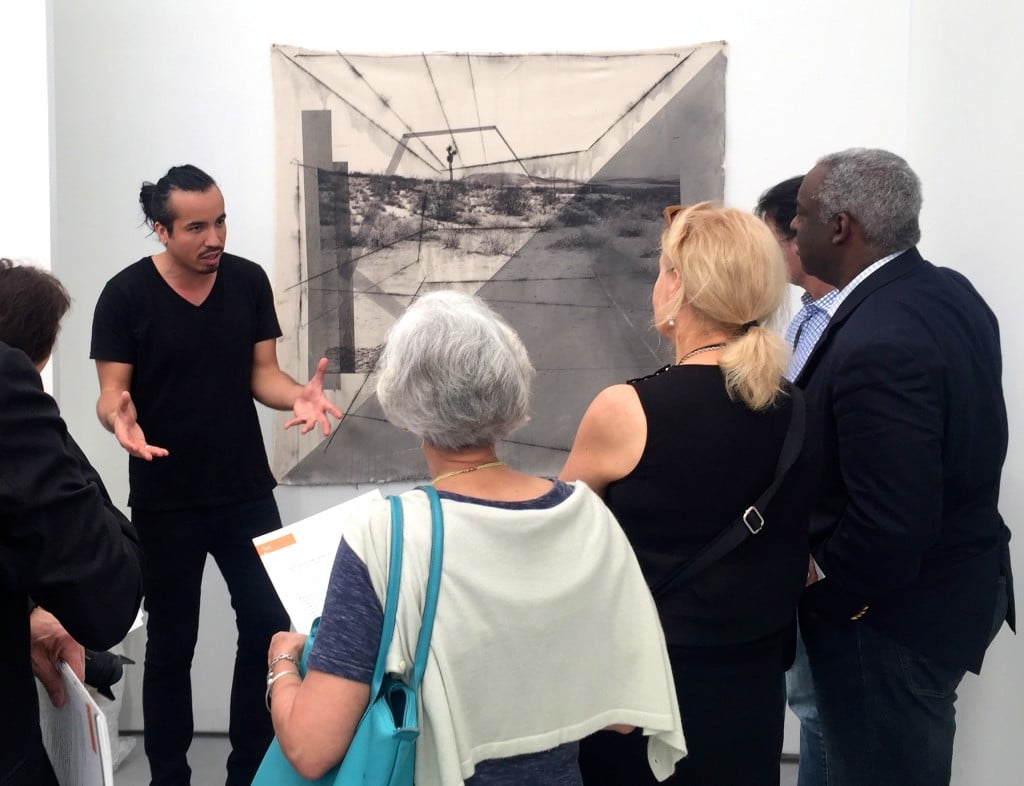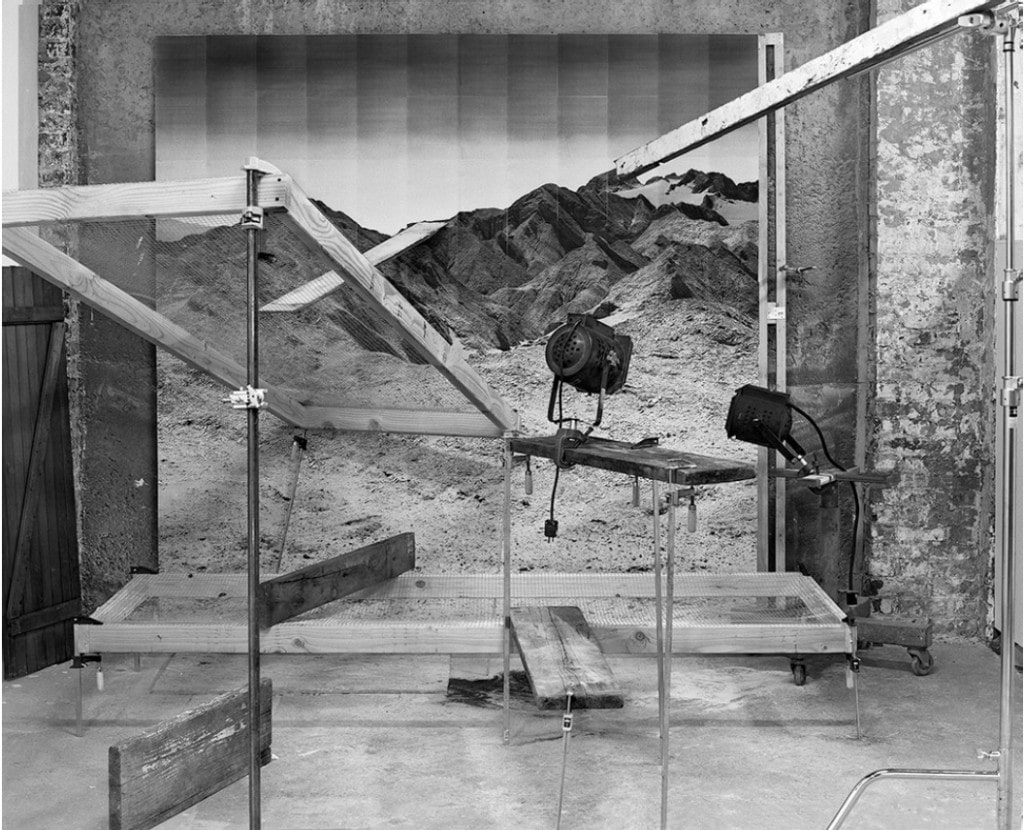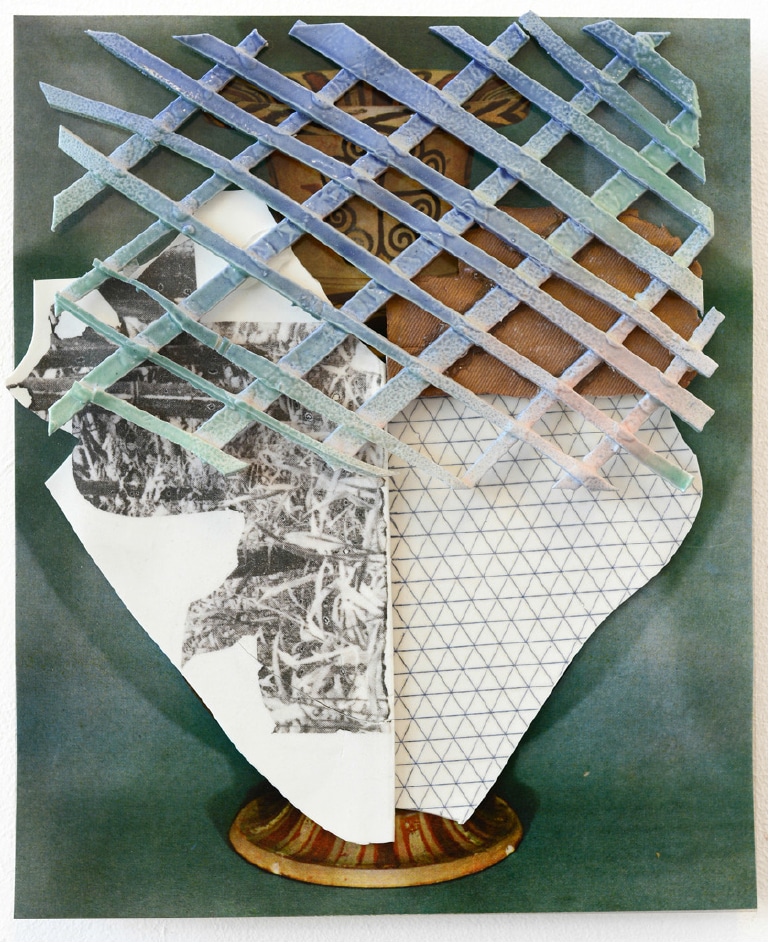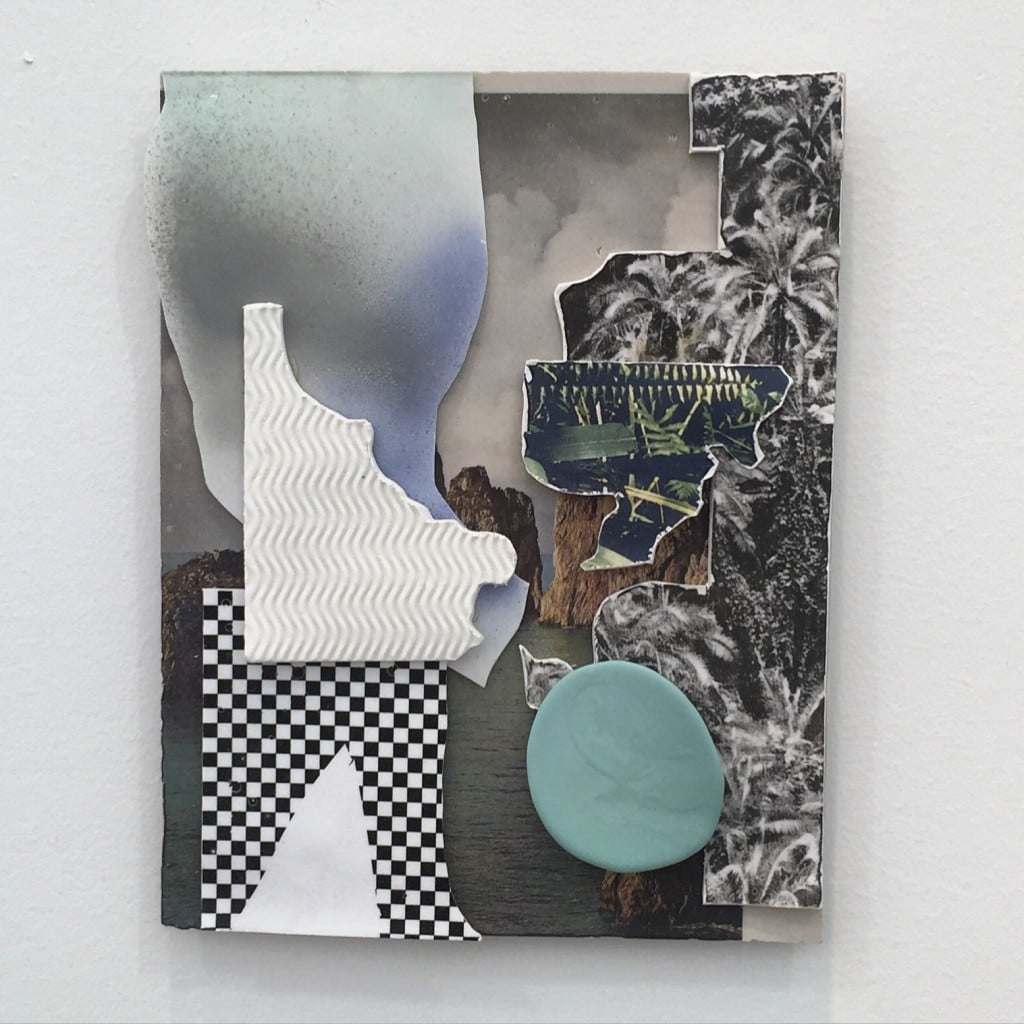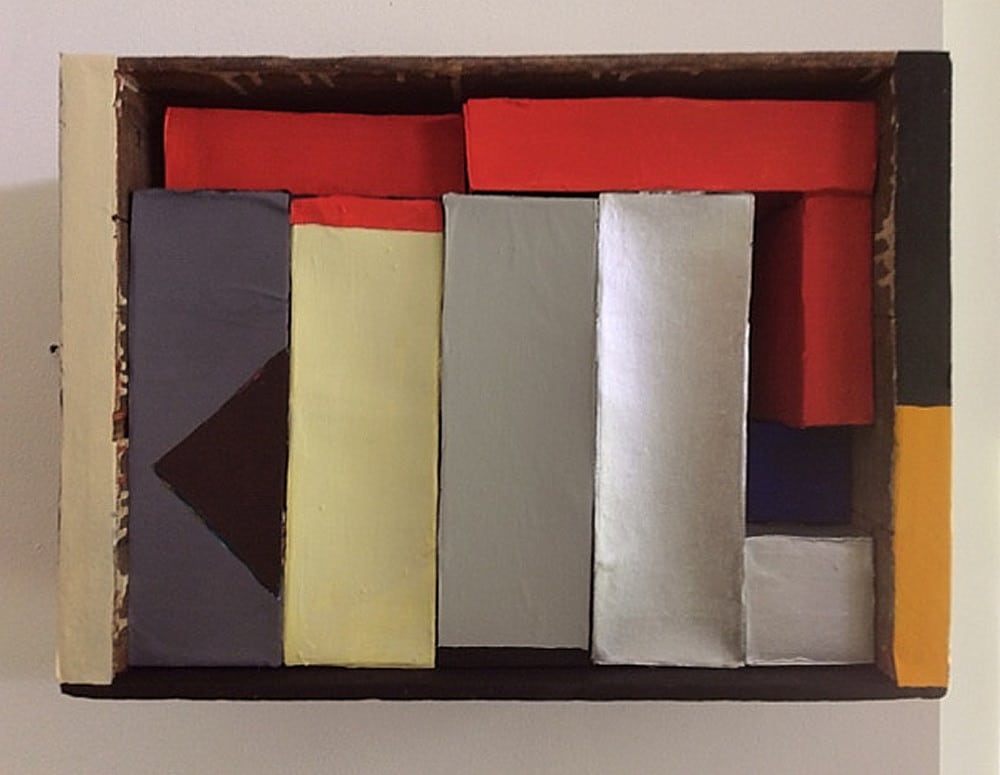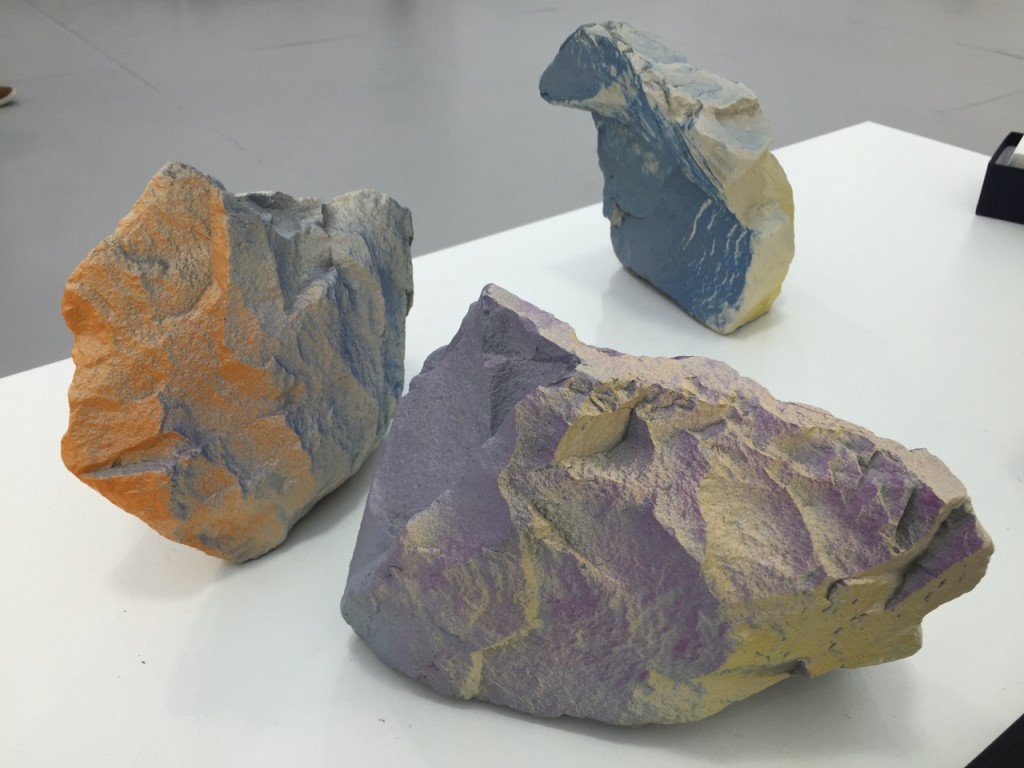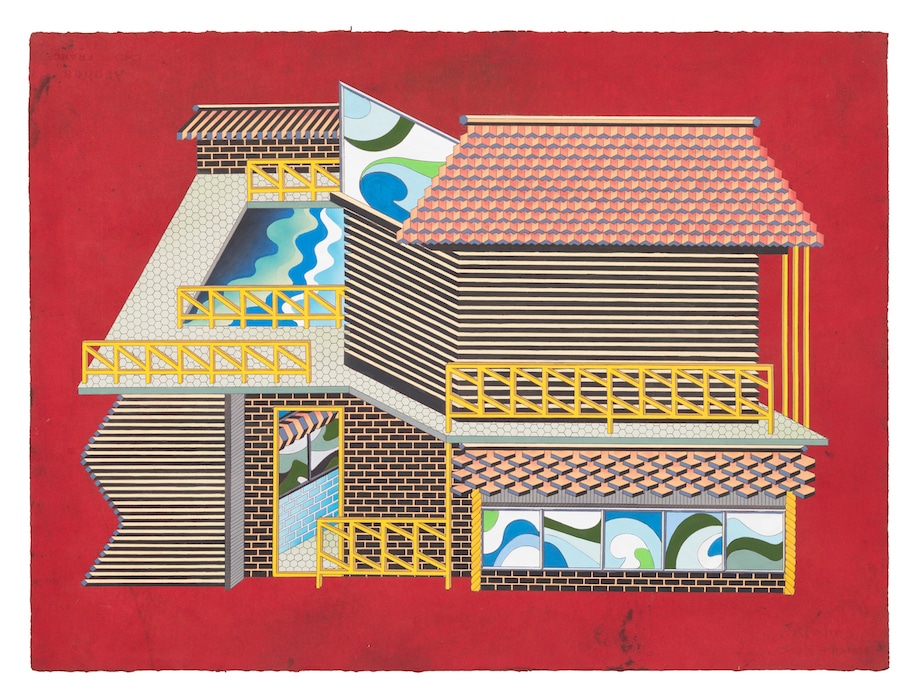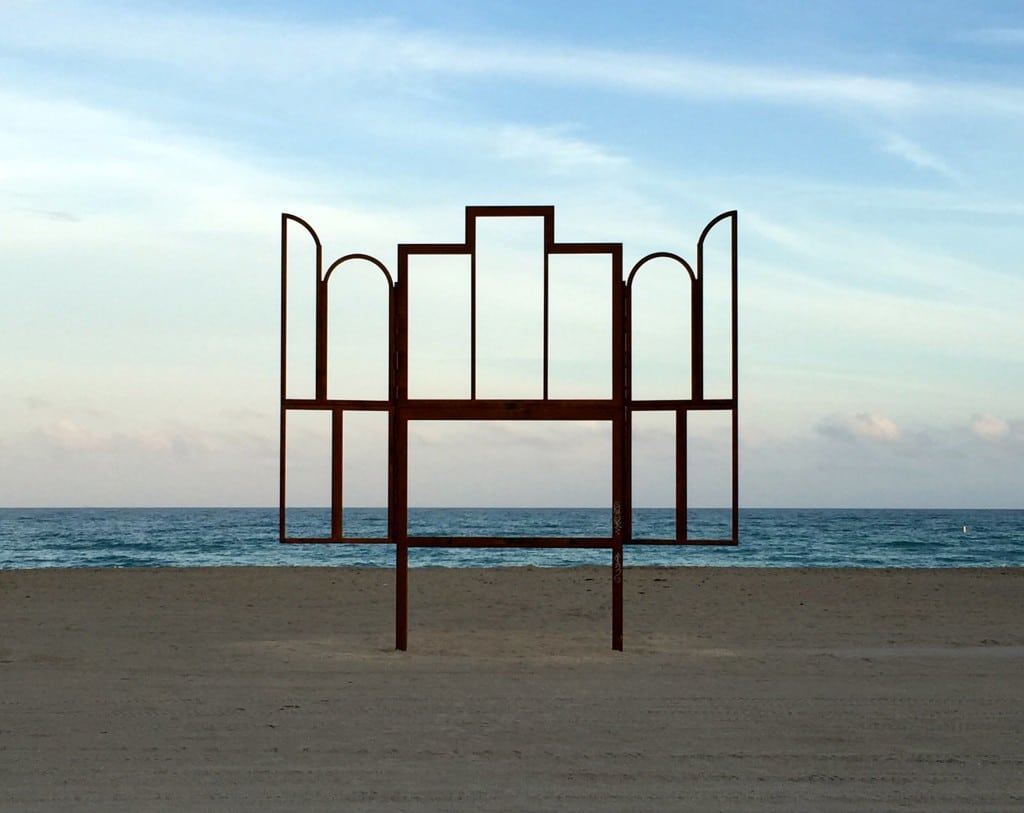Every December the art world descends on Miami for Art Basel Miami Beach and the 20+ satellite fairs. On view you’ll see art world superstars and blue-chip modern classics, but what we think is most exciting are the lesser known artists we find at galleries from around the world. Artists whose work is united by their soulful nature, rich in concept and beautifully made. These are the unexpected treasures from the fairs that remind us why we love what we do.
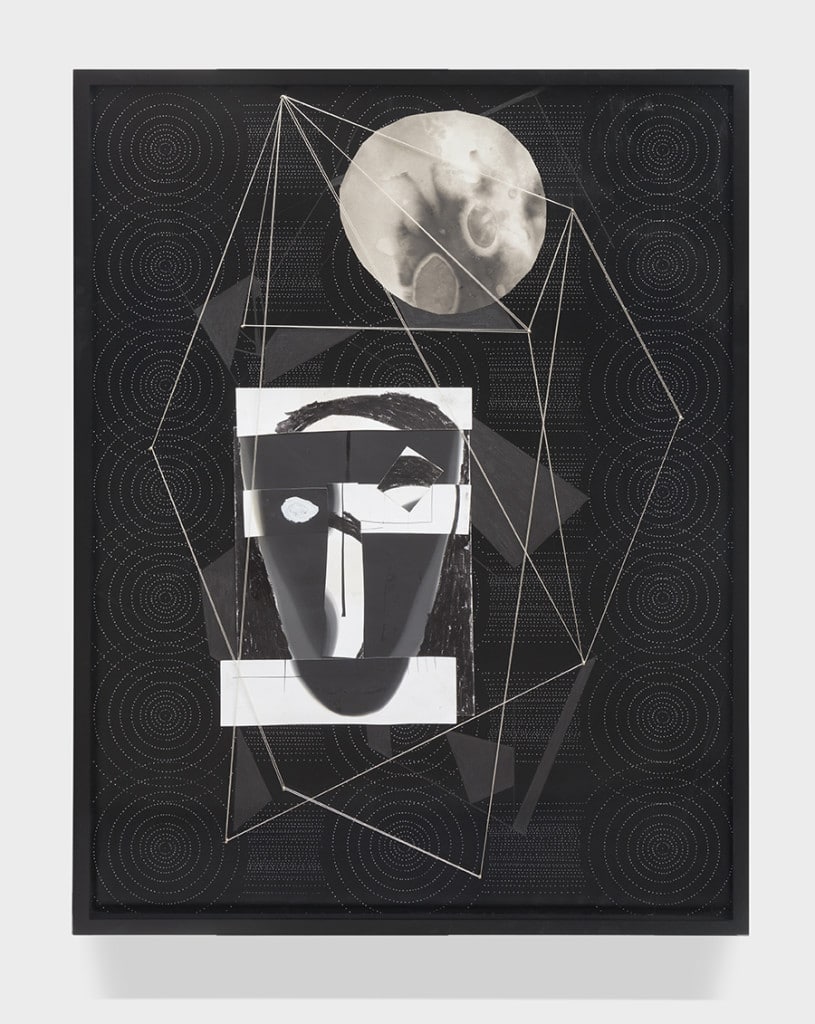
Sheree Hovsepian “The State of Nature” 2015, archival dye transfer print, graphite, acrylic, gelatin silver prints, brass nails, string. Courtesy of Monique Meloche Gallery.
Sheree Hovsepian’s black and white photographic abstractions question the apparent boundaries of the imitative medium. Departing from traditional presentations of the photograph, Hovsepian blends studio and dark room techniques in a manner that confounds our usual expectations of mechanical image-making. In this new body of work Hovsepian layers and collages elements onto the photographic surface in a performative process exploring light and time.
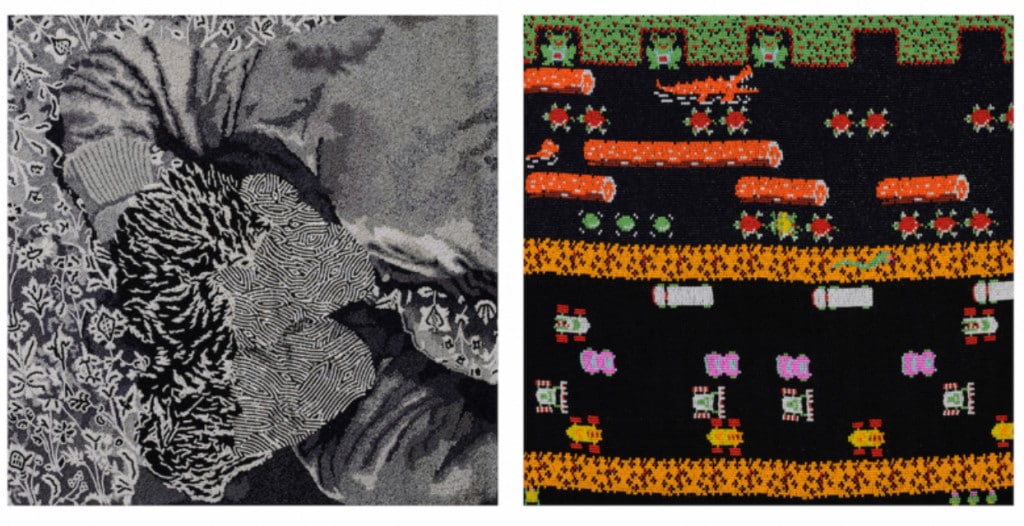
Avinash Veeraraghavan “Orpheus” 2015 (diptych) embroidery on white silk organza, thread and glass beads. Courtesy of Gallery Skye.
Avinash Veeraraghavan lives and works in Bangalore, India. In the diptych Orpheus, the left panel is a reference to Jean Cocteau film by the same title. It shows Orpheus having passed through and wake on the virtual side of the mirror. This represents a journey to the other shore that has been shown in a contemporary idiom of the video game in the panel on the right. The piece alludes to a larger narrative of the artist’s personal life, a struggle to be self aware and come to terms with himself, a process of individuation.
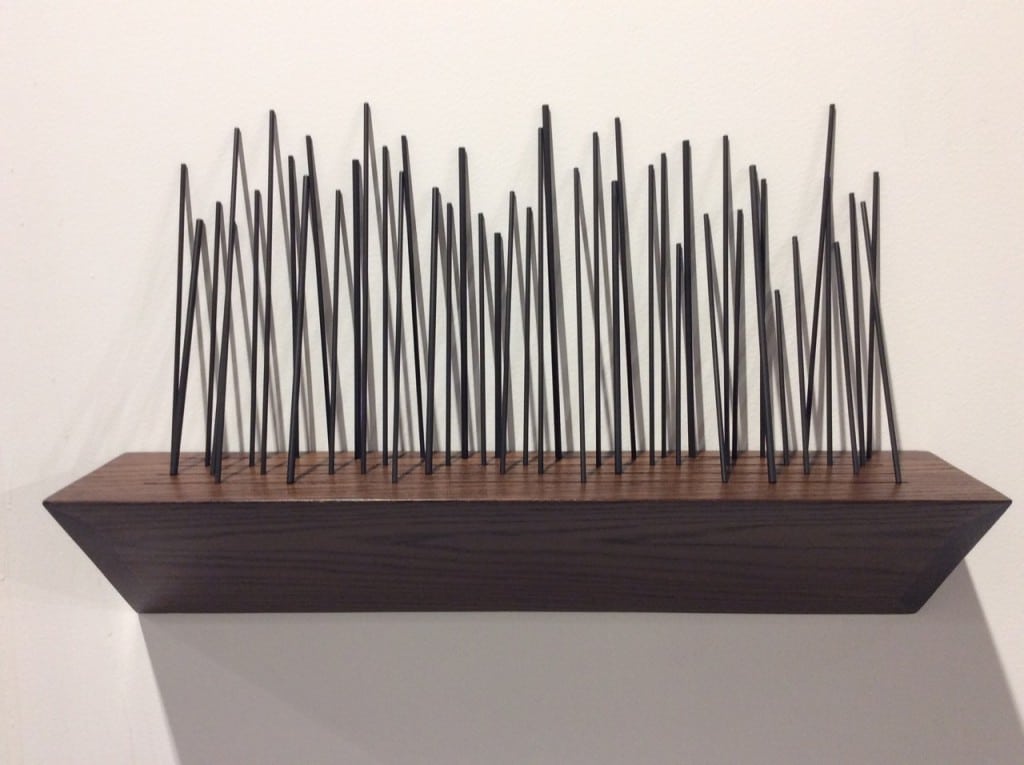
Jorge Méndez Blake “The Mending Wall (Robert Frost)” 2015, aluminum, automotive paint, wood. Courtesy of Meessen De Clercq.
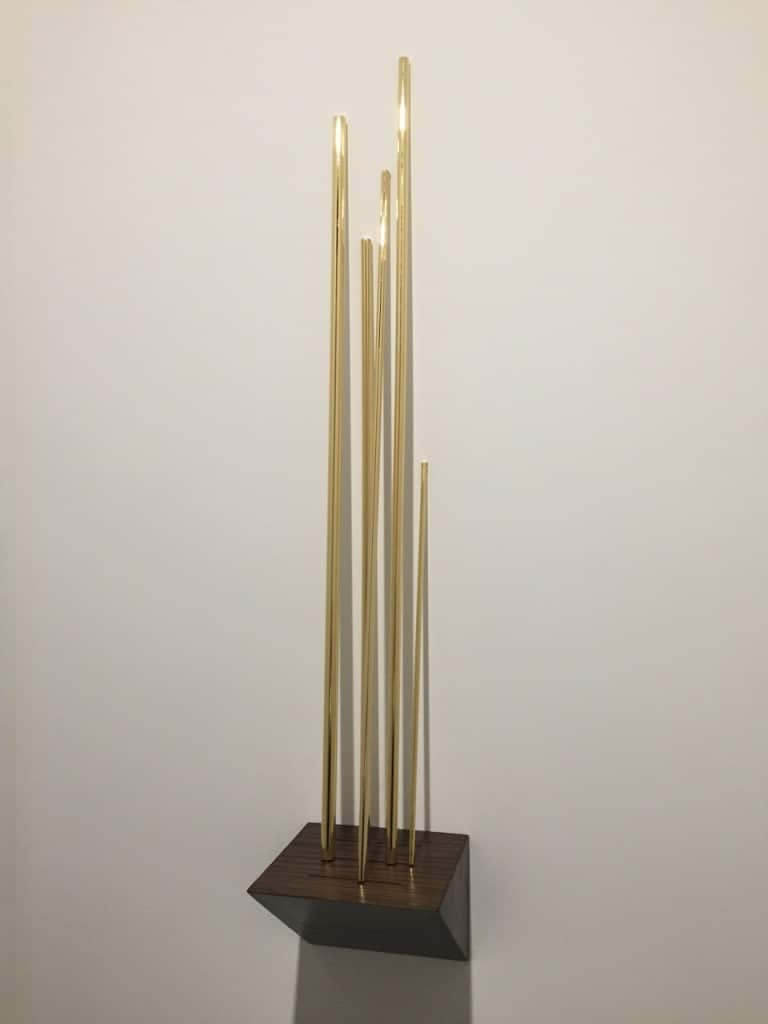
Jorge Méndez Blake “Why I’m not a Painter (Frank O’hara)” 2015 gold plated copper tubes, wood. Courtesy of Meessen De Clercq.
Mexican artist Jorge Méndez Blake uses language and literature on one hand and architecture on the other. He is interested in the concept of balance, but in the figurative sense, drawing inspiration from the poem Mending Wall by American poet Robert Frost who deals with issues of separation and balance of the wall which forms the boundary between two pieces of land (good fences make good neighbors). Méndez Blake used this title for a vast body of work consisting of 40 drawings of architectural structures situated in open spaces surrounded by walls. In addition, he uses Frost’s texts as structural components of his work; for example by “translating” in the form of a metal sculpture in a precarious position the length of the poem Mending Wall.
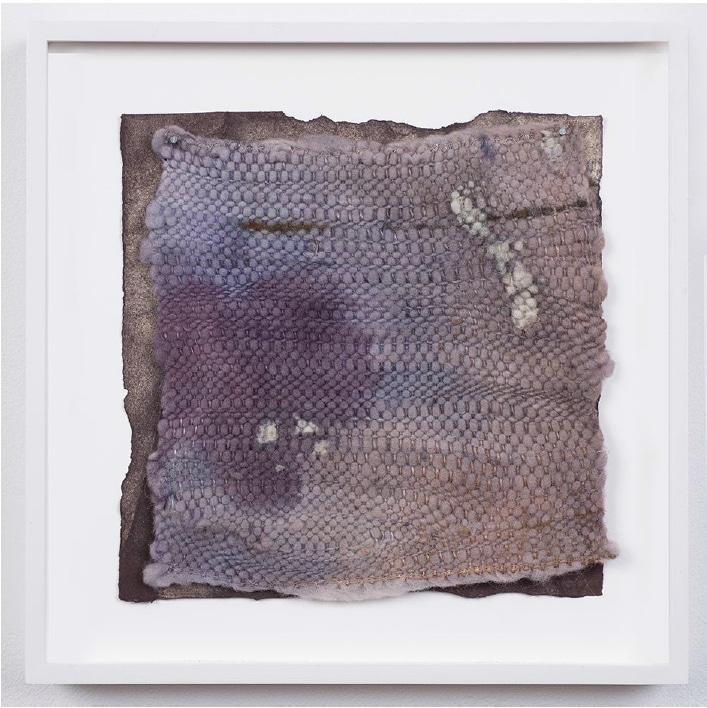
Martha Tuttle “…and in it cold water makes a clear sound” 2015 wool, paper, logwood, hematite, and steel iron. Courtesy of Tilton Gallery.
Martha Tuttle received her MFA from the Yale School of art in the Spring of 2015 in painting and printmaking. Her works are a collaboration between raw materials and human intention and begin with hand-dying wool with raw pigments and inks. She employs a repetitive rubbing and washing process with all of her materials, resulting in works that have a topography revealing a conversation between the intended and the unforeseen.
Created through a process of photographing and re-photographing, Rodrigo Valenzuela‘s works capture the passage of time through multiple stages of production and destruction in the artist’s studio. Valenzuela constructs eccentric geometric forms using chalk, spray paint, wood, packing foam, drywall, and other commercial detritus. He photographs each work in progress, printing and incorporating these moments back into the scenes.
Amsterdam-based Marjolijn de Wit creates ceramic-photographic collages. She appropriates photo-based imagery in combination with raw, glazed, or photo-printed ceramic pieces to explore ideas of future archeology, the interpretation of history, and our relationship with nature and the built environment.
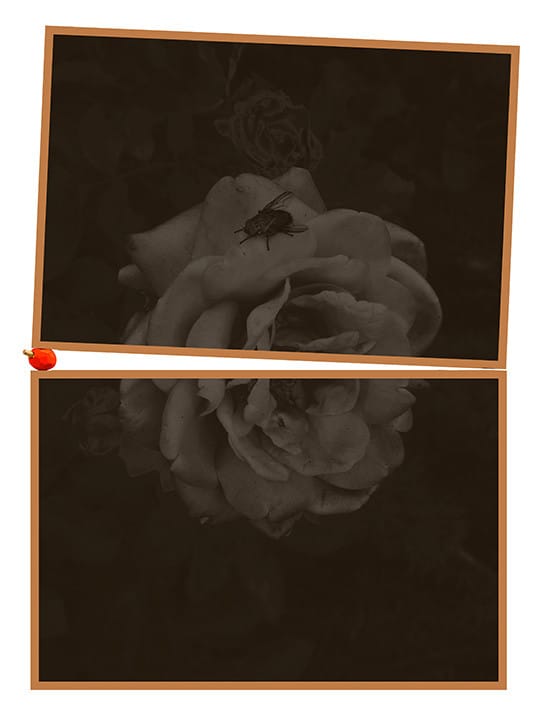
Colby Bird “Rose and Black Fly, Los Angeles” 2015 Texas Red Oak, Poplar, Cedar, Pine, paint, charcoal, fixative, wood stain, photostatic print, screws, gator board, acrylic, brass tack, NY Times, leather. Courtesy of Halsey McKay Gallery.
Colby Bird’s hand-toned photographic works on paper are made sculptural with the addition of custom made, professionally painted frames. The work is a meditation on the role of labor and reward in the pursuit of an art career, and examines the interplay and mediation of these actions with both pleasure-seeking and guilt. To create these prints, Bird has utilized the normally discarded negative portion of pull-apart instant film, which has been scanned, output as Photostatic prints, and repeatedly saturated with wood stain. The supports are intensely-worked wood objects: sawed, sanded, stained, constructed, then re-sanded, re-stained, and re-constructed until their appearance becomes an elemental representation of the original object.
Nancy Shaver has been making art for four decades. She uses vernacular mass-market objects that she has collected for years, then paints and arranges them into colorful contained collections and assemblages giving new life to discarded items.
Argentinian artist Santiago Taccetti lives and works in Berlin. His enamel and stone sculptures are inspired by the story of The Chicago Boys – a group of Chilean economists who trained at the Department of Economics of the University of Chicago under Milton Friedman. These illusory works made of rocks taken from a construction site, speak of a failed economic promise.
Edie Fake, a transgender artist who left the University of Southern California’s Roski School of Art along with all six of his classmates in protest recently, creates visually riveting drawings, some depicting architecture, some pure abstractions. His work often deals with euphemism and coded language and speaks about the manifestation and meaning of queer space. His drawings use architectural elements as visual metaphors for the ways in which definition and validation elude trans identities. These structures come together to map what Fake considers to be a liminal landscape of self-definition. The imagery depicted, such as stages, parade floats and art deco buildings, combines parts of Fake’s family history with aspects of queer history and a sort of psychic geography of transpeople in society.
As part of Art Basel Miami Beach over 20 large-scale sculptures and installations by international artists were installed in the exhibition Public in Collins park and the beach. Kris Martin‘s “Altarpiece (Ghent)”, originally commissioned by the High Line in New York City, was recreated for installation on the beach. The sculpture is in the form of the framework of the altarpiece in Belgium, where the artist is from, entitled Adoration of the Mystic Lamb or also known as The Ghent Altarpiece by Jan Van Eyck. The Ghent Altarpiece is the most frequently stolen artwork in history, having been burgled, all or in part, on six occasions, the object of a total of 13 crimes over its almost 600-year existence. The artist has created a minimalist reproduction of the icon from his hometown.
